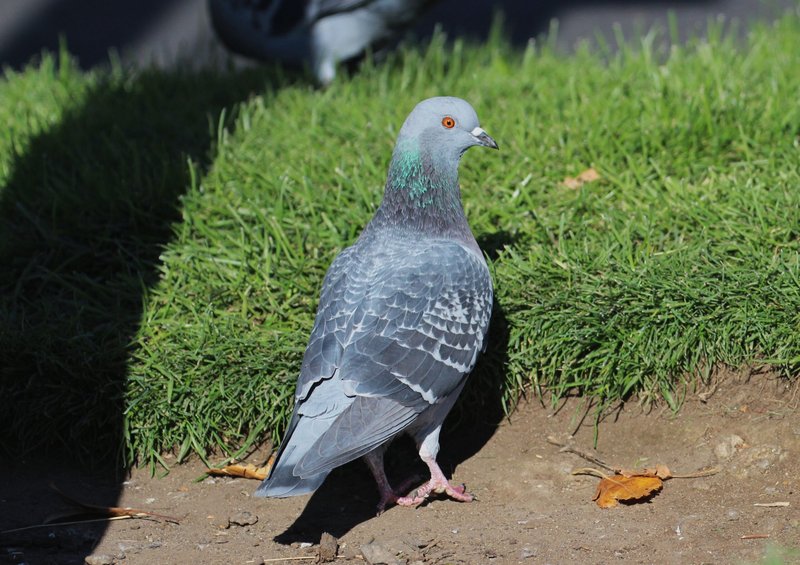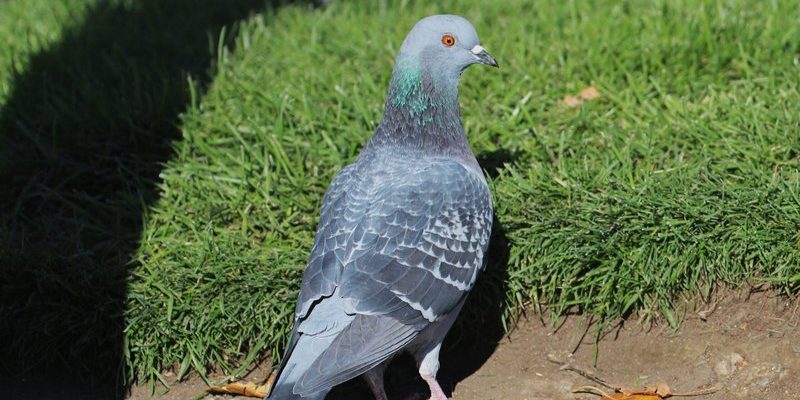
Imagine being a rock pigeon, soaring through the sky with a grace that belies your humble appearance. These birds have been around for thousands of years, and their adaptability has allowed them to thrive in diverse environments. From urban jungles to natural cliffs, rock pigeons have found a way to make their homes alongside humans. But what is it about them that makes them so unique? Let’s dive into the top ten facts that might change the way you view these feathered friends.
1. They’re City Dwellers by Choice
You might think of rock pigeons as just city birds, but their love for urban settings has deep roots. Originally, they roamed the cliffs and rocky outcrops of Europe and Asia. When humans began to build cities, these adaptable birds saw an opportunity. They found that urban environments offered plenty of food and places to nest. It’s like they said, “Why build a nest in the wild when there’s a cozy ledge on that building?”
As we pave the ground and create high-rises, rock pigeons have taken full advantage. They thrive on leftover scraps from our meals and often nest in nooks and crannies of buildings where they feel safe. This makes them one of the few bird species that has successfully made the transition from nature to urban life.
2. Remarkable Navigation Skills
Here’s the thing: rock pigeons aren’t just flying around aimlessly. These birds have an incredible sense of direction, allowing them to navigate long distances with ease. Scientists believe they rely on several cues, including the Earth’s magnetic field and visual landmarks. Imagine walking your favorite route to work every day and somehow being able to do it blindfolded. That’s how good they are!
They’ve been used as homing pigeons for centuries, delivering messages tucked into tiny canisters tied to their legs. This remarkable ability to find their way home from hundreds of miles away has made them invaluable in times of war and emergency situations. In a world full of distractions, they seem to have the ultimate GPS system!
3. Diverse Coloration
While many people picture gray birds when they think of rock pigeons, these birds can actually come in a stunning array of colors and patterns. From pure white to rich browns and even striking blacks, rock pigeons showcase a beautiful spectrum of hues. It’s almost like they have their own fashion statement—each one proudly flaunting its unique look.
This variety stems from their domestication and breeding over the years. Different breeds have emerged, showcasing different feather colors and patterns. You might find a pigeon with iridescent green feathers on its neck, shimmering in the sunlight. These colorful variations aren’t just for show; they can play a role in mating rituals and attracting partners.
4. They’re Social Creatures
If there’s one thing rock pigeons love, it’s being part of a community. You’ll often see them gathered in flocks, socializing and foraging together. This social behavior isn’t just for fun; it plays an essential role in their survival. Being part of a group can help protect individual pigeons from predators, as there’s safety in numbers.
These flocks have a hierarchy, too. You might notice some pigeons more dominant than others, which can be especially apparent during feeding time. This social dynamic helps them navigate the complexities of urban life, making the most of their resources while bonding with their fellow pigeons.
5. An Impressive Diet
You might be surprised to learn that rock pigeons are not picky eaters. Their diet typically consists of grains, seeds, and fruits, but they also relish whatever scraps they can find in urban areas. From leftover pizza crusts to seeds scattered on the ground, these birds will eat just about anything.
Their digestive systems are quite efficient, allowing them to process food quickly. Unlike humans, who might take a leisurely lunch break, rock pigeons can snack on the go, constantly foraging and eating throughout the day. So next time you see one pecking on the sidewalk, remember that it’s just trying to make the most of its surroundings.
6. Communication Through Cooing
If you’ve ever heard a rock pigeon cooing, you might have thought it was just a simple sound. But that cooing is actually a complex form of communication! Pigeons use a variety of calls to express different emotions or needs. For example, a male pigeon might coo to attract a mate, while a distressed bird may emit a different sound to alert others to danger.
This vocalization helps maintain their social structure and can even convey information about food sources or threats. So, when you hear those soft coos filling the air, know that there’s a lot more going on beneath the surface.
7. Strong Parental Instincts
Rock pigeons are devoted parents. After mating, both the male and female work together to build a nest, often choosing high, safe places in urban settings. Once their eggs hatch, both parents take part in feeding and caring for the chicks, known as squabs.
They produce a special substance called pigeon milk, which is a nutrient-rich secretion. This is fed to the young until they’re old enough to eat solid food. Their commitment to nurturing their young is a big part of what makes them such fascinating creatures. Honestly, it’s heartwarming to see how much care they put into their little family.
8. Striking Historical Significance
Throughout history, rock pigeons have played significant roles beyond being just city birds. They’ve been symbols of peace and messengers in various cultures. During ancient wars, they were used to carry vital messages from one location to another, saving countless lives.
Even in modern times, their contributions continue. In World War I and II, for example, pigeons delivered messages across enemy lines, earning honorary medals for their bravery. So think about it next time you see one—it might just be a feathered hero with a story to tell!
9. Good for the Environment
You might be surprised to know that rock pigeons play an essential role in their ecosystems. By helping to control the insect population and serving as prey for larger birds and mammals, they contribute to ecological balance. Their foraging habits also help with seed dispersal, which encourages plant growth in urban areas.
In a way, they are like the unsung gardeners of our cities, helping maintain green spaces and biodiversity. While they might sometimes be seen as a nuisance, their presence is a reminder of how interwoven nature is with our daily lives.
10. They’re More Than a Nuisance
While some people see rock pigeons as pesky birds that leave droppings and scavenge through trash, they have much more to offer. Their adaptability, intelligence, and rich cultural history make them a vital part of our shared environment. Instead of shooing them away, consider observing their behavior from a distance—you might be surprised by what you discover.
Recognizing the role they play in our ecosystems can help shift our perspectives. Pigeons have survived alongside us for centuries, showing us that even the most common species can be extraordinary in their own right.
In conclusion, rock pigeons are far from ordinary. They’ve carved out a niche in our world, showcasing adaptability, intelligence, and a unique character that’s often overlooked. Next time you see one fluttering about, take a moment to appreciate all the fascinating aspects of this seemingly simple bird. Who knows? You might just find a new appreciation for these feathered friends among us.

